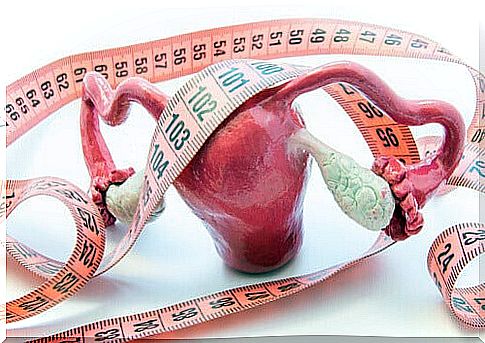Polyps In The Uterus, What Should You Know?
In most cases, polyps in the uterus do not cause any symptoms. They are almost always benign in nature, although in approximately 1% of cases they can turn into a malignant pathology. Do you want to know more about it?

Polyps in the uterus are bumps that grow on the inner wall of the uterus. According to this information from the Mayo Clinic, they can have varied sizes, ranging from a few millimeters to several centimeters. Some reach the volume of a golf ball, or even more.
The true incidence of polyps in the uterus is unknown. This is because in many cases they do not generate any symptoms and, therefore, there is no consultation. However, it is estimated that its prevalence is between 10 and 24% of all women worldwide.
The most common is that they appear in women between the ages of 40 and 65. Despite this, polyps have also been found in the uterus of 12-year-old girls and 81-year-old women. Therefore, they can appear at any age.
What are polyps in the uterus?

Polyps in the uterus are small finger-shaped bumps that grow on the inner wall of the uterus. This wall is called the endometrium, which is why it is also referred to as “endometrial polyps”. They take place by the proliferation of cells and the consequent growth of the endometrium, according to this study carried out by the University of Cape Town (South Africa).
A woman may have one or more polyps in the uterus. They are usually kept within this organ, although it sometimes slides down the cervix into the vagina. They are more common in women who are reaching or have already gone through menopause.
The vast majority of polyps in the uterus are benign. Only a percentage of 0.5 to 1% present malignancy. Generally, malignant polyps are those that occur after menopause, are larger than 2 cm in size, and cause postmenopausal bleeding.
Symptoms and diagnosis
Most uterine polyps do not have any symptoms. They are usually found during a routine exam. In cases where there are symptoms, these usually include the following manifestations :
- Abnormal bleeding. It may include very heavy bleeding during the menstrual period (menorrhagia); bleeding not related to menstruation, that is, bleeding after menopause (metrorrhagia); or bleeding after sex.
- Infertility. Difficulty or inability to conceive may be related to uterine polyps.
- Abortions
- Pain. It occurs when polyps move into the vagina.
The diagnosis of uterine polyps is carried out through different tests such as:
- Transvaginal ultrasound. It is carried out by introducing a rod-shaped device into the vagina. This creates an image through sound waves.
- Hysteroscopy. A thin, lighted, flexible telescope is inserted into the vagina and cervix. This allows you to see inside the organ.
- Endometrial biopsy. It is carried out by means of a suction catheter. A sample is taken and then examined in the laboratory. It is not 100% reliable.
Causes of polyps in the uterus

Science does not know the reason why polyps are generated in the uterus. Hypotheses have been proposed about its possible genetic, hormonal and other origin. However, there are no conclusive results so far.
What has been detected is that there are some risk factors. They are as follows:
- High levels of estrogens.
- Use of tamoxifen. It is a drug that is used to treat breast cancer. It increases the risk of the formation of uterine polyps.
- Hormonal treatments in postmenopause.
- Obesity.
- Hypertension.
- Other diseases. Syndrome Lynch syndrome, Cowden and other rare diseases are associated with the development of uterine polyps.
Other data of interest
As this research carried out by the University of York (United Kingdom) assures, the treatment that is usually given to polyps in the uterus is their surgical removal or polypectomy. This procedure is performed by curettage or uterine scraping, or by hysteroscopic resection. This last procedure is the safest and most effective.
Surgery is especially indicated in the following cases:
- Symptomatic premenopausal women.
- Asymptomatic premenopausal women with polyps larger than 1.5 cm in diameter.
- Symptomatic and asymptomatic postmenopausal women.
In cases where polyps arise as a result of ingestion of tamoxifen, a careful study should be made of each particular situation. It is recommended that all women have regular check-ups with the gynecologist to detect any problems in time.









